IMSML Website Article 18/2023: Resolution MSC.263(84)/Rev.1 – Performance Standards and Functional Requirements for The Long-Range Identification and Tracking of Ships, Part 1 of 10 - Overview, Definitions and General Provisions
This is a 10 parts series on Revised performance standards and functional requirements for the long-range identification and tracking of ships. These standards were adopted by the Maritime Safety Committee via Resolution MSC.263(84)/REV.1 and released in Malaysia through the Marine Department’s (MARDEP) Malaysian Shipping Notice MSN 03/2023.
PART 1 of this series of articles on MSC.263(84)/REV.1 consists of:
[1] PARAGRAPH 1 - Overview
[2] PARAGRAPH 2 - Definitions
[3] PARAGRAPH 3 - General Provisions
PARAGRAPH 1 - Overview
The Long-Range Identification and Tracking (LRIT) system provides for the global identification and tracking of ships, see Paragraph 1.1. According to Paragraph 1.2, the system consists of:
(a) Shipborne LRIT information transmitting equipment;
(b) Communication Service Provider(s);
(c) Application Service Provider(s);
(d) LRIT Data Centre(s), including any related vessel monitoring systems(s);
(e) LRIT Data Distribution Plan;
(f) International LRIT Data Exchange.
Note that Contracting governments have a LRIT Coordinator acting on its behalf to review systems and also conduct audits.
Pursuant to Paragraph 1.3, LRIT information is provided to Contracting Governments. Search and rescue services of the various states are entitled to received LRIT information, upon request through the following:
(a) National, Regional, Cooperative and International LRIT Data Centres;
(b) International LRIT Data Exchange, where necessary.
A list of ships from each Contracting State are provided to the LRIT Data Centre. These ships are entitled to flag these states. There is a requirement to transmit LRIT information, without undue delay. These includes salient details and updates when changes occur. Only LRIT information selected by the relevant regulator / administration of each states need to be transmitted to the LRIT Data Centre, see Paragraph 1.4. The rights and obligations of the rescue services are the ones established in regulation V/19-1 of SOLAS 1974, see Paragraph 1.5.
PARAGRAPH 2 - Definitions
This is a Paragraph that provides meaning to the various terms used in Resolution MSC.263(84)/Rev.1.
[1] ‘Convention’ refers to SOLAS 1974, ie the International Convention for the Safety of Life at Sea 1974 (as amended), see Pargraph 2.1.1;
[2] ‘Regulation’ means a Regulation of the Convention, see Paragraph 2.1.2;
[3] ‘Chapter’ means a Chapter of the Convention, see Paragraph 2.1.3;
[4] ‘LRIT Data User’ means a Contracting Government or a search and rescue (SAR) service which opts to receive the LRIT information it is entitled to, see Paragraph 2.1.4;
[5] ‘Committee’ means the Maritime Safety Committee, see Paragraph 2.1.5;
[6] ‘High-speed craft’ means a craft as defined in Regulation X/1.3, see Paragraph 2.1.6;
[7] ‘Mobile offshore drilling unit’ means a mobile offshore drilling unit as defined in regulation XI-2/1.1.5, see Paragraph 2.1.7;
[8] ‘Organization’ means the International Maritime Organization, see Paragraph 2.1.8;
[9] ‘Vessel monitoring system’ means a system established by a Contracting Government or a group of Contracting Governments to monitor the movements of the ships entitled to fly its or their flag. A vessel monitoring system may also collect from the ships information specified by the Contracting Government(s) which has established it, see Paragraph 2.1.9;
[10] LRIT information means the information specified in regulation V/19-1.5, see Paragraph 2.1.10.
Note: The definitions in Paragraph 2.1.1 to 2.1.10 above shall apply unless expressly provided otherwise.
The term ‘ship’ is used in a much wider sense. When used in the context of performance standards, also includes mobile offshore drilling units and high-speed craft as specified in Regulation V/19-1.4.1. It is included to mean a ship which is required to transmit LRIT information, see Paragraph 2.2.
Note: Terms which have left undefined shall have the same meaning attributed to them in the Convention, see Paragraph 2.3.
PARAGRAPH 3 - General Provisions
Regulation V/19-1.1 preserves the rights of IMO Member States with respect to their rights, jurisdiction and obligations under International Law. In the context of long-range identification and tracking of ships, IMO Member States can preserve their legal regimes in the various Ocean Zones, such as the High Seas, Territorial Seas, Exclusive Economic Zone, the Contiguous Zone, or Straits Used for International Navigation, as well as Archipelagic Sea lanes. The provision on performance standards are in addition to the rights of Member States, see Paragraph 3.1. This preservation of existing rights under International Law is strengthened by a provision that recognition should be given to International Conventions, Agreements, Rules or Standards that provide for protection of navigational information when operating the LRIT system, see Paragraph 3.2. In particular, the present performance standards should always be read together with Regulation V/19-1 and the various technical specifications for the LRIT system, see Paragraph 3.3 and the Long Range Identification and Tracking System - Technical Documentation (Part I) in MSC.1/Circ.1259, as revised.
Thank you for reading IMSML Website Article 18/2023
Stay tuned for the next IMSML Website Article 19/2023: Resolution MSC.263(84)/Rev.1 – Performance Standards and Functional Requirements for The Long-Range Identification and Tracking of Ships, Part 2 of 10 - Shipborne Equipment
Signing-off for today,
Dr Irwin Ooi Ui Joo, LL.B(Hons.)(Glamorgan); LL.M (Cardiff); Ph.D (Cardiff); CMILT
Professor of Maritime and Transport Law
Head of the Centre for Advocacy and Dispute Resolution
Faculty of Law
Universiti Teknologi MARA Shah Alam
Selangor, Malaysia
Friday, 15 September 2023
Note that I am the corresponding author for the IMSML Website Articles. My official email address is: uijoo310@uitm.edu.my
